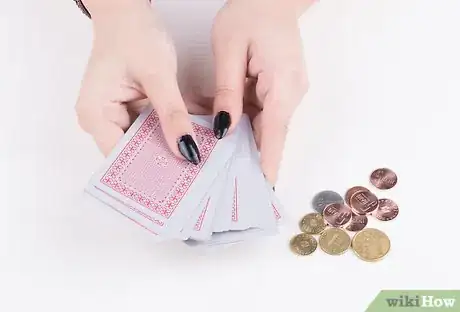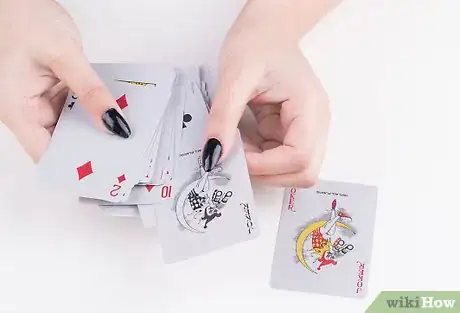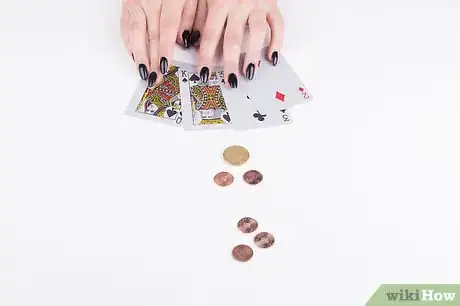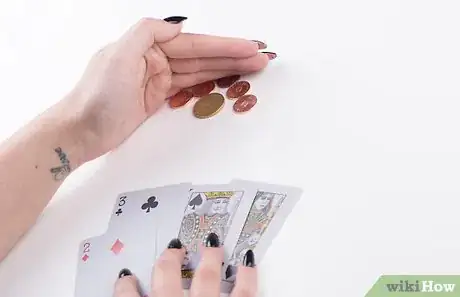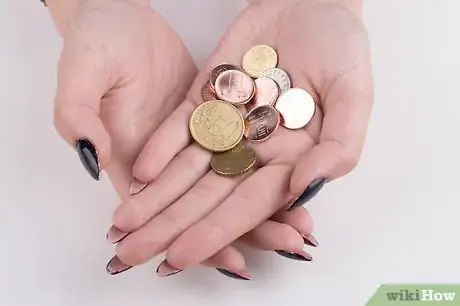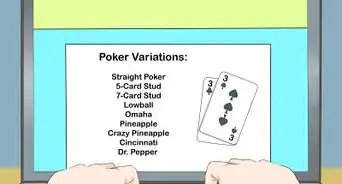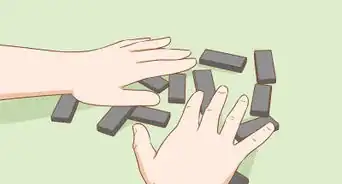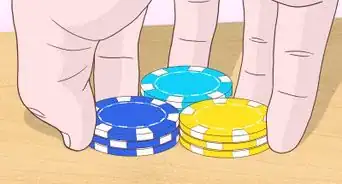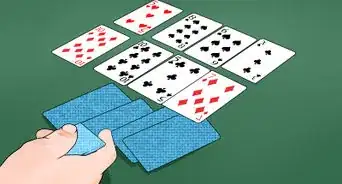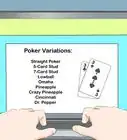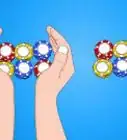This article was co-authored by wikiHow Staff. Our trained team of editors and researchers validate articles for accuracy and comprehensiveness. wikiHow's Content Management Team carefully monitors the work from our editorial staff to ensure that each article is backed by trusted research and meets our high quality standards.
This article has been viewed 69,822 times.
Learn more...
Penny Ante was the ultimate low stakes poker from times when a penny still had buying power. It is not a game of its own, but a set stake in any gambling game of poker, where each player "antes up" one cent, and can raise the bet in penny increments as the hand is dealt. Playing a game of penny ante is easy, with just a few modifications to base card games.
Steps
Playing the Game
-
1Choose a card game to play. Penny ante is most commonly associated with poker, with pennies serving as the highest bid possible during a given play. However, any card game where wagers and winnings are made can be played as penny ante.
-
2Get out the playing cards. Remove the Jokers if you are not playing them as wild cards. Cut and shuffle the cards. Make sure to choose a dealer who is familiar with the game and is willing to deal for the night.
- Choosing a single experienced dealer to serve all night will help keep things moving along at a good pace and keep the game from being bogged down.
Advertisement -
3Ante up! This is where each player puts their "Ante" in the middle of the table. In poker this is known figuratively as "The Pot."
- Despite the name, pennies aren't strictly required to play penny ante. Matchsticks are a common substitute for pennies that might be more appealing. Other small items suitable for use include small sweets such as jellybeans.[2]
-
4Play out the hands you are dealt. Bet in penny increments as the hands are dealt, raising and calling other betters as you go. You may use poker chips if you have them available, but the winnings will be the pennies.
- Familiarize yourself with common poker strategy to improve your chances of walking out with pockets full of pennies. Raising, calling, and recognizing tells are essential to successful poker play – even if you aren't playing for high stakes.[3]
-
5Deal and bet hands until someone has won. Once all of the pennies in everyone else's stash are gone, you can declare a victor. Most of all, have fun! Losing is far less painful when the stakes are low, and fun rivalries can be established without players getting too emotional.
- A common poker night can run upwards of 4 to 6 hours, depending on the number of players and skill. Plan ahead if you intend on finishing only when there is a victor.
Setting Up
-
1Invite people over. Contact your friends and see who wants to play. Penny Ante is a game primarily played for fun, so make sure to mention this when you contact them.
- Consider coworkers or other acquaintances that you would like to get to know better when arranging a play date. Few people are unwilling to part with a few pennies, whereas an evening of regular poker can scare away some.
- Pick a date and let everyone put it in their calendars. Try using Facebook or other social media sites to set up an event that people can opt into.
-
2Set up the playing area. Most games of poker are played around a table at home. Make sure there is plenty of room and enough chairs to support everyone who wants to play.
- Invest in a nice table! If you plan on playing penny ante on a regular basis, buying a table that can can fit everyone who wishes to play is a great idea. Certain tables are designed for card games, with surfaces that make picking up cards much easier.
-
3Stock up on refreshments. Poker parties are casual, so don't worry about setting up a formal dinner. Instead, pick up plenty of snacks and finger foods. Beer is always appreciated (if not expected), but make sure to provide alternatives for those guests who don't drink alcohol.[4]
- Making the party a Bring Your Own Beer (BYOB) party will help alleviate some of the costs associated with throwing a poker night.
-
4Load up on pennies. Gather up enough pennies to supply each player with enough to last the night. If you don't have spare pennies laying around, head to the bank or nearest store and exchange a few dollars for a couple rolls of pennies.
- Purchase a set of inexpensive poker chips if you are playing penny ante poker to complete the experience. They represent the ante of the game and help keep track of winnings.[5]
Warnings
- Some people have a weakness for gambling, and even though the stakes in this game seem small, chronic or addictive gamblers should be careful or stay away from it.⧼thumbs_response⧽
- People can lose their tempers in any game, so watch out for signs someone is getting upset. This is meant to be a fun game, and having a fight break out will end the fun.⧼thumbs_response⧽
Things You'll Need
- A table and chairs.
- A standard deck of playing cards.
- Pennies or other small change.
- Snacks and drinks.
- Poker chips (optional)
References
- ↑ http://definitions.uslegal.com/p/penny-ante-game/
- ↑ http://www.top15poker.com/poker-guides/How-to-play-poker.html
- ↑ http://www.wsop.com/poker-games/texas-holdem/strategy/
- ↑ http://www.hgtv.com/design/make-and-celebrate/entertaining/tips-for-hosting-fun-parties
- ↑ http://www.bicyclecards.com/how-to-play/basics-of-poker/
